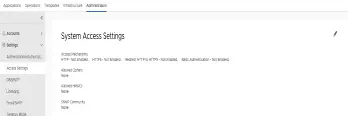
Ulrich Hölscher
| 3 minutes

A few days ago I came across the requierment to use the X-Forward-For HTTP header field to get the client IP. Looking at the documentation this looks quite easy. Just create a newtork profile and apply this profile during cluster creation.In the profile you need to the the x_forward_forparameter to insertinstead of the default replace. So I created the following profile:
| |
I used a very simple test application to showcase the feature is working. If you want to use it for yourself ulrix/php-test. Below find the ingress yaml using the NSX-T ingress controller.
| |
With this setup everything works as expected. The application can now utilize the X-Forward-For field and see the client IP.
Custom Ingress Controller
So what happens if I use my own ingress controller instead of the NSX-T one. So my next step was to create a custom ingress with the same Network Profile as before. I know assumed that this would work as well. But it fails the X-Forward-For field is not set and your custom ingress controller will not see the client IP.
If you have a look at the Load Balancer Server Pool in the NSX-T manager you can see that the SNAT Profile is set to AutoMap.

So there’s currently no support by TKGI to set this flag to transparent. So I created the small scipt below to use the NSX-T Manager REST API to override this flag and make the SNAT Mode transparent. You can download the GitHub Gist as well:
| |
You need to specifiy the admin user, password, NSX-T Manager URL as well as the Server Pool ID you want to change.
tkgi-nsx-xff.sh -u admin -p VMware1!VMware1! -n https://nsxmgr.... -s 57bd457a-b142-4de4-93e8-9c7151ca31a6
Afterwards your Server Pool SNAT Mode is transparent and the X-Forward-For field in the HTTP header of your custom ingress controller is set. This is officialy not supported and just a workaround if you need the feature.


